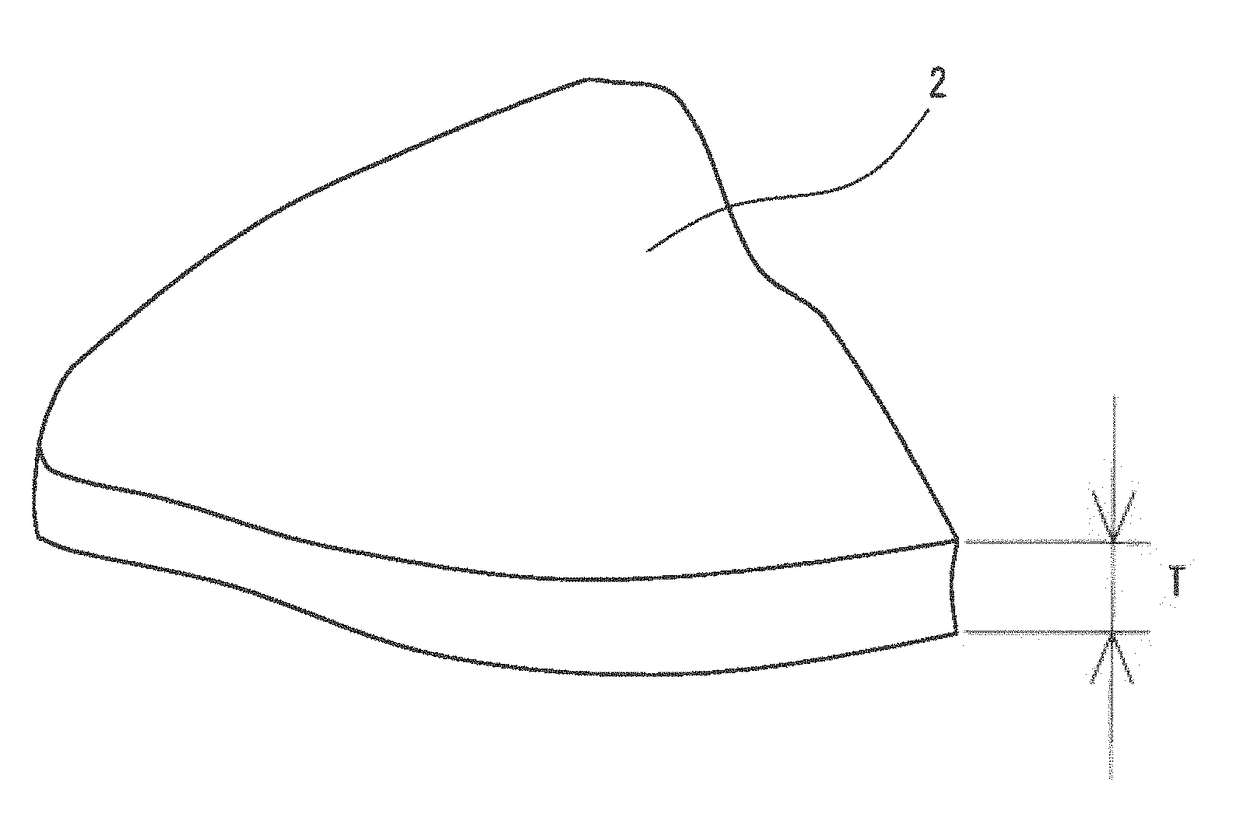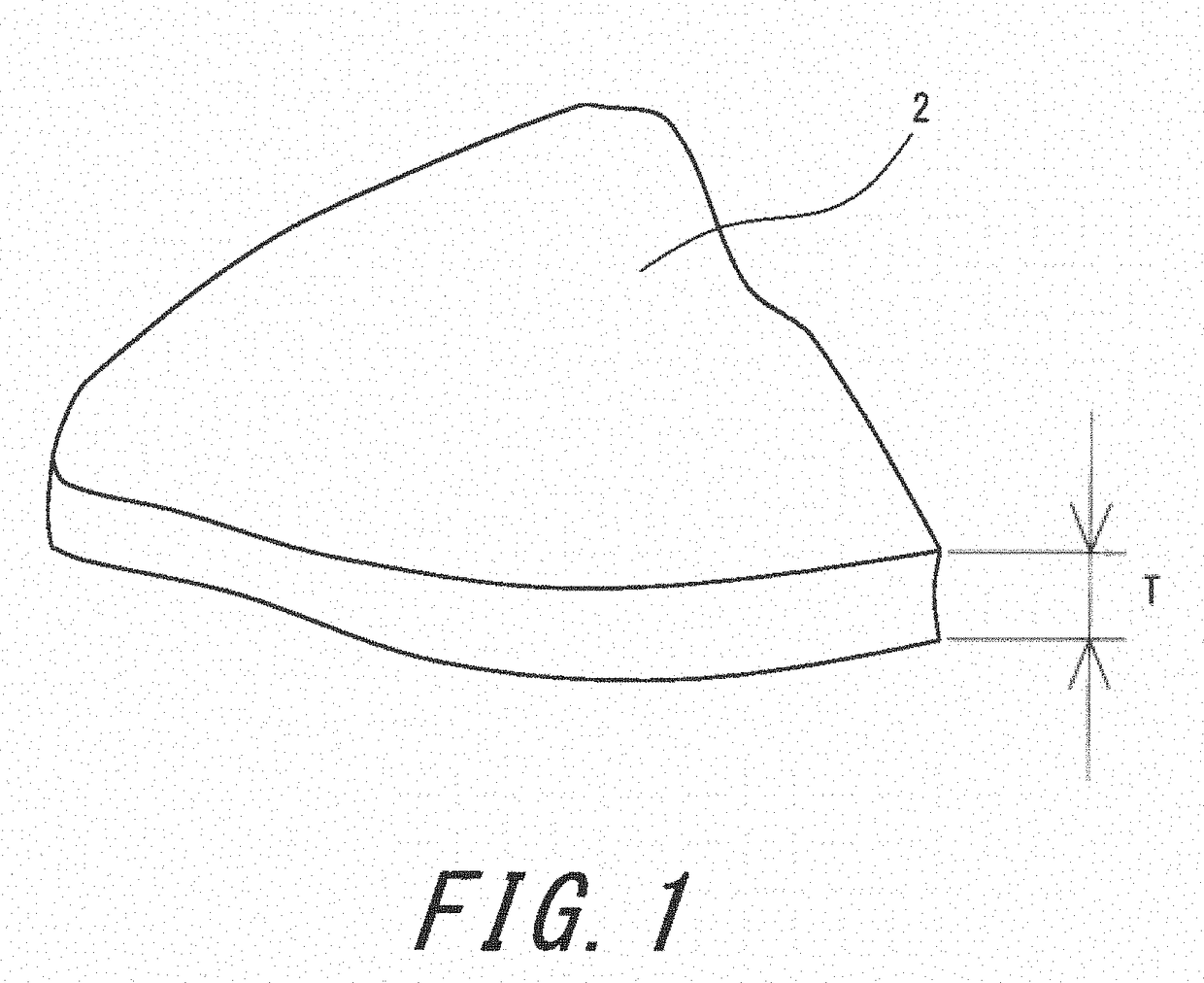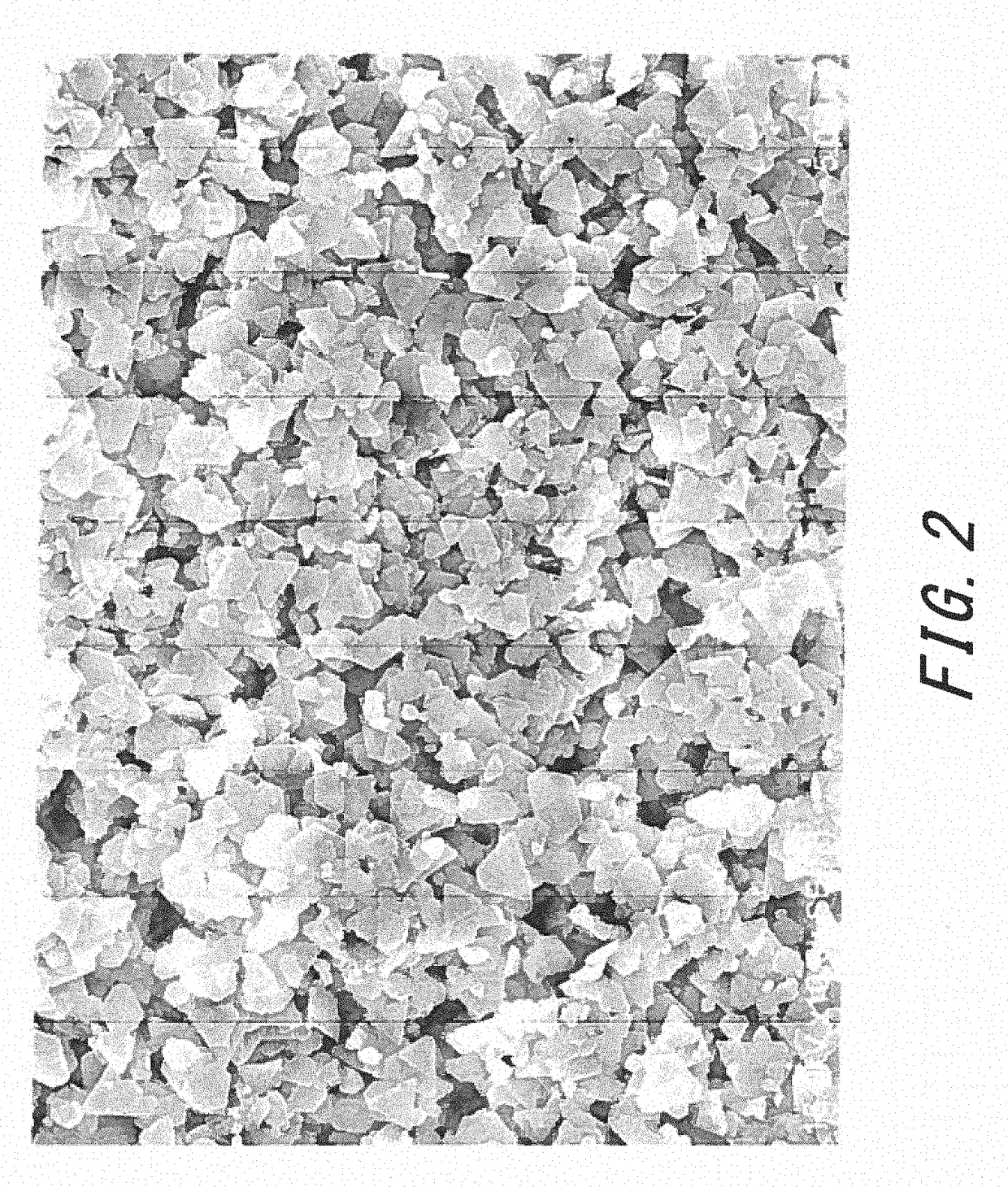Electrically conductive fine particles
a technology of electric conductive fine particles and fine particles, applied in the direction of metal/alloy conductors, conductors, conductors, etc., can solve the problem that the paste covered by the mask is not cured, and achieve the effect of high thermal conductivity during heating, good printing characteristics, and successful sinting
- Summary
- Abstract
- Description
- Claims
- Application Information
AI Technical Summary
Benefits of technology
Problems solved by technology
Method used
Image
Examples
example 1
[0068]Fifty grams of silver nitrate was dissolved in 1 L of distilled water to obtain a first solution. Meanwhile, 22.2 g of oxalic acid was dissolved in 1 L of distilled water to obtain a second solution. The first solution was mixed with the second solution to obtain a mixture liquid containing silver oxalate. Impurities were removed from this mixture liquid. Three grams of polyethylene glycol (dispersant) was added to 1 L of the mixture liquid, and the mixture liquid was stirred for 30 minutes while ultrasonic waves were applied thereto. With this, silver oxalate was dispersed. An appropriate amount of acetic acid was added to the dispersion liquid to adjust the PH of the dispersion liquid to 3. The dispersion liquid was placed in an autoclave. The dispersion liquid was pressurized at a pressure of 0.5 MPa. The dispersion liquid was heated to 130° C. while being stirred at a speed of 300 rpm. The stirring was conducted for 30 minutes at this temperature to obtain a liquid contain...
example 2
[0069]A liquid containing fine particles was obtained in the same manner as Example 1, except formic acid was added to the dispersion liquid instead of acetic acid to adjust the PH to 4, the temperature of the dispersion liquid was set to 150° C., and the stirring speed was set to 350 rpm.
example 3
[0070]A liquid containing fine particles was obtained in the same manner as Example 1, except propionic acid was added to the dispersion liquid instead of acetic acid to adjust the PH to 5, pressure was not applied before the reaction, and the temperature during the reaction was set to 150° C.
PUM
| Property | Measurement | Unit |
|---|---|---|
| particle size distribution measurement | aaaaa | aaaaa |
| particle diameter Dmax | aaaaa | aaaaa |
| particle diameter Dmax | aaaaa | aaaaa |
Abstract
Description
Claims
Application Information
 Login to View More
Login to View More - R&D
- Intellectual Property
- Life Sciences
- Materials
- Tech Scout
- Unparalleled Data Quality
- Higher Quality Content
- 60% Fewer Hallucinations
Browse by: Latest US Patents, China's latest patents, Technical Efficacy Thesaurus, Application Domain, Technology Topic, Popular Technical Reports.
© 2025 PatSnap. All rights reserved.Legal|Privacy policy|Modern Slavery Act Transparency Statement|Sitemap|About US| Contact US: help@patsnap.com



